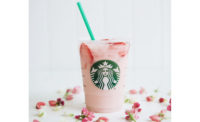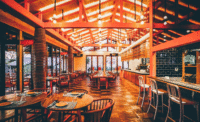Changing Consumer Behavior Shifts Spirits from the Glass to the Menu
As alcohol consumption by the glass declines, alcohol is increasing as a flavor in savory and sweet items

The use of alcoholic beverages as a flavor for everything from appetizers to desserts has generally increased during the past few years.
SOURCE: Datassential’s MenuTrends
F. Scott Fitzgerald once wrote “here’s to alcohol, the rose-colored glasses of life.” That may have been true for many, but younger consumers may well change that quote and instead refer to kombucha, tisanes or switchels.
Despite the growth of consumers at or over the legal drinking age, the share of consumers drinking alcohol with any regularity is declining. Interestingly however, although alcohol consumption in the glass declines, alcohol is increasing as a flavor in savory and sweet items.
For the record, US alcohol consumption (by volume) has declined steadily during the past two years, dropping 0.8% in 2018 according to IWSR. Consider the size of the alcohol market and that 0.8% represents millions of dollars. According to the study, beer has taken the biggest hit—but wine and spirits have not been immune to the trend.
All of this is driven by changing Millennial habits but alcohol consumption across all age cohorts appears to be declining. Given their size, however, the relatively dramatic shift in behavior among the Millennials has had the largest impact. As a result, we’ve seen extensive innovations in nonalcoholic beverages both in retail and foodservice. Even booze-free bars are cropping up in metro areas to accommodate those taking a break from drinking or fully abstaining.
In response to these changes, new no alcohol and low alcohol spirits are other options are hitting the market. Europe and Asia are well ahead of the US in development of these alternative adult beverages, with Seedlip, out of the U.K., being the best-known nonalcoholic spirit on this side of the pond. Seedlip has enjoyed a virtually unchallenged position in the market for the past few years but that is set to change dramatically as new manufacturers abroad and at home are poised to introduce low and no alcohol options in all categories.
Chefs, however, have not slowed their use of spirits and other alcoholic beverages on the menu. Rather, the use of alcoholic beverages as a flavor for everything from appetizers to desserts has generally increased during the past few years.
In food, alcohol is being used in a variety of applications. Sauces are made more complex with the addition of various spirits. Some, such as bourbons, rye, and beer, work particularly well in specific applications such as BBQ and burgers. With the increased availability of global spirits, chefs may use these less common but traditional alcoholic beverages to increase interest in dishes from international cuisines.
The dessert category has long been a menu part with extensive alcoholic beverage use. Alcohol may be used to flavor cakes and pies, frostings and puddings. Alcoholic milkshakes had their day a few years ago, but boozy ice cream is the new iteration. Operations such as The Hop Ice Cream Café in Asheville, N.C., and STIL in Boise, Idaho, not only offer boozy ice cream but both offer flights of the ice cream alone or paired with wine or beer. In this category, manufacturers have noticed the trend and are reacting accordingly. Haagen Dazs, for example, has introduced a line of alcohol-infused ice creams.
America’s relationship with alcohol has always been complicated. If it wasn’t, Prohibition likely wouldn’t have gone very far and certainly didn’t last very long. It’s hard to say whether the current trend toward mindful drinking or flat out abstinence will continue past the Millennials and into Gen Z, but the effects of the current trend are certainly reverberating through the alcohol industry.
Originally appeared in the June, 2019 issue of Prepared Foods as Spirited Discussion.
Looking for a reprint of this article?
From high-res PDFs to custom plaques, order your copy today!






